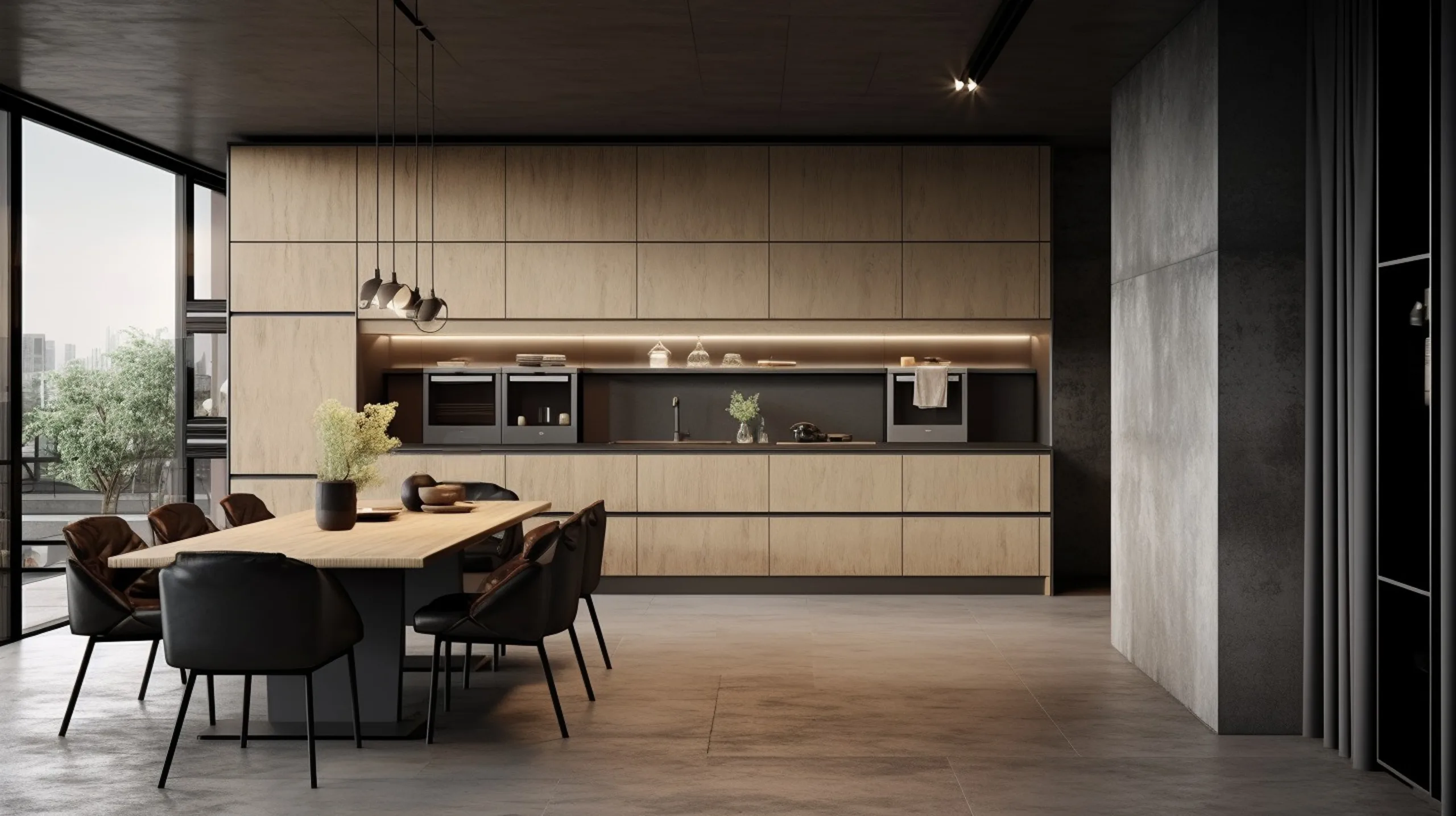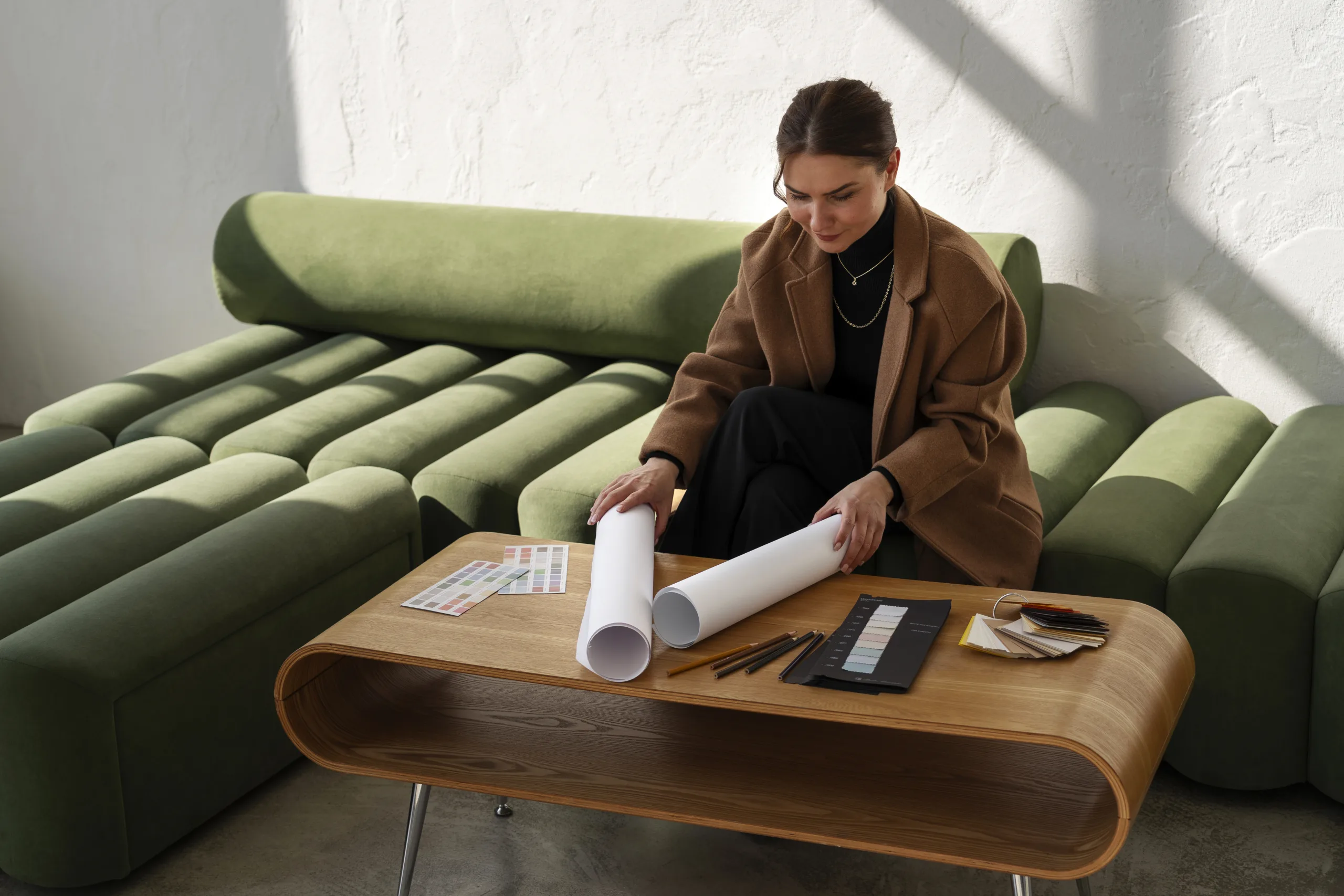
Clinic Interior Design in Dubai: Balancing Care and Style
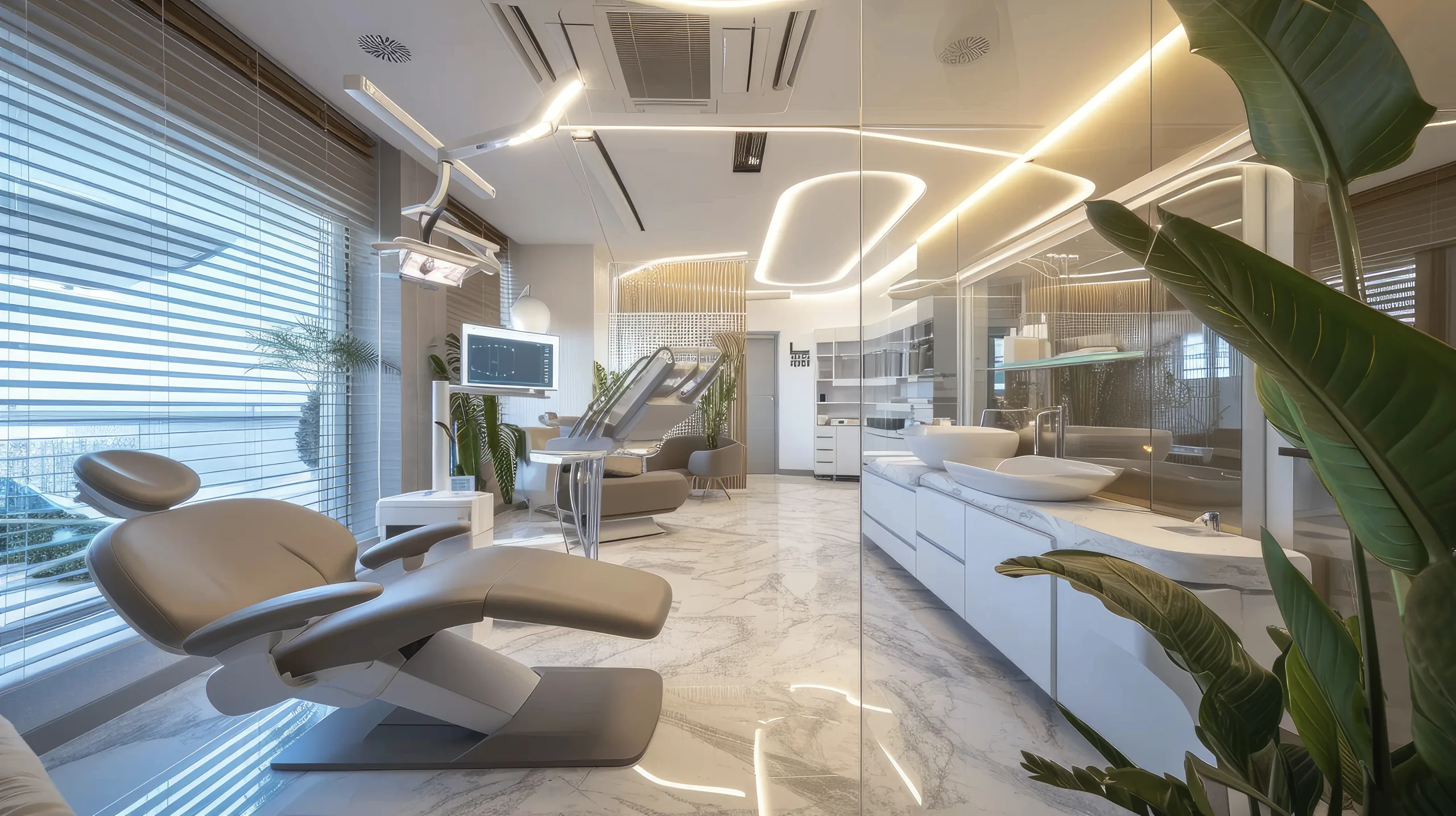

Rina
Designing a clinic in Dubai is not only about sterile white walls and bright lights.
The city expects more, patients expect more, and regulators expect you to get the details right.
The sweet spot sits where clinical rigor meets brand-worthy style, where a calm, reassuring environment supports efficient workflows, cleanability, and clear wayfinding.
This guide walks you through how to create a clinic that feels premium, runs smoothly, and passes approvals without drama.
Why Dubai Sets a Higher Bar for Clinics
Dubai blends global patient expectations with a hospitality mindset.
People are accustomed to hotels that feel effortless and retail that feels curated.
Clinics need to bring that same clarity and polish, while still hitting healthcare standards.
That means thoughtful zoning, premium yet durable finishes, and technology that makes visits feel simple, not clinical.
Core Design Principles for Healthcare Spaces
Patient-Centered Flow and Stress Reduction
Anxiety starts at the door.
Smooth arrival, clear sign-in, and an obvious path to lower stress before anyone meets a clinician.
Place reception to catch sightlines from the entrance, separate first-time and returning patients if possible, and create waiting zones with personal space and visual relief.
Small cues, like warm textures and natural elements, can bring heart rate down and improve perceived wait time.
Evidence-Informed Design Choices
Lighting, color, and acoustics influence behavior and comfort.
Soft neutrals with one or two accent tones perform better than loud palettes.
Upholstery with a gentle texture reads warmer than shiny vinyl, yet still needs medical-grade performance.
Acoustic panels and soft furnishings in waiting areas reduce noise peaks, which supports privacy and overall calm.
Universal Accessibility and Inclusion
Accessibility is a promise, not a box to tick.
Ensure clear turning radii, reachable counters, generous doorway widths, legible signage, and contrasting floor transitions that work for everyone.
Consider neuro-inclusive touches like quiet corners, simplified graphics, and predictable lighting that avoids flicker and harsh contrast.
Masterplanning the Journey
Zoning That Works
Front-of-House, Reception, and Waiting
Welcome is not a sign, it is a sequence.
Provide a short pause space just inside the door, then direct to reception with clear visual anchors.
Waiting areas benefit from a mix of seating types, single chairs for privacy, small clusters for families, and a few power outlets for devices.
Add a hydration point if possible, it signals care.
Clinical and Procedure Areas
Keep clean and dirty flows separated.
Minimize travel distances between consults, labs, and treatment rooms.
Standardize room layouts so staff never hunt for supplies.
Give doors full swing clearance, and plan for medical gases, sinks, and sharps disposal from day one.
Staff, Storage, and Back-of-House
Staff experience shapes patient experience.
Provide a proper break room, lockers, and daylight access if possible.
Build storage into walls and corridors to avoid clutter.
Add a discrete staff entrance for uniforms and deliveries so public areas stay serene.
Intuitive Wayfinding
People should navigate without asking for help.
Use a clear naming system, color bands or subtle patterns by zone, consistent iconography, and lighting as a guide.
Keep signs readable at a distance, with simple language.
Add small orientation maps where routes split.
Navigating Dubai-Specific Compliance
Approvals, Submissions, and Typical Stakeholders
Plan for early coordination with your designer, MEP consultant, contractor, and landlord.
Expect submissions for health authority review, fit-out permissions, and fire safety compliance.
Early alignment on room functions, plumbing points, fresh air requirements, and fire life safety saves time later.
Hygiene, Infection Control, and Cleanability
Choose materials that tolerate frequent cleaning.
Seamless floors where feasible, coved skirtings, tight junctions around sinks, and non-porous counters in treatment rooms.
Specify door hardware and taps that support touch reduction, then pair with a cleaning protocol you can actually maintain.
Materials and Finishes That Look Good and Last
Floors, Walls, and Ceilings
-
Floors: Use durable, slip-resistant surfaces that handle disinfectants. Homogeneous vinyl, quality LVT, or porcelain tiles in public areas. Consider seamless options for procedure rooms.
-
Walls: High scrub ratings matter. Two-part paints or hygienic wall claddings in clinical zones, more tactile finishes in waiting areas for warmth.
-
Ceilings: Acoustic mineral tiles or cleanable gypsum boards, coordinated with lighting and services. Keep access hatches where maintenance is likely.
Counters, Joinery, and Surfaces
Reception desks take a beating.
Use compact laminate, quartz, or solid surface with rounded edges and kick protection.
In clinical rooms, seamless backsplashes, integrated sinks where appropriate, and cabinetry with soft-close hardware reduce noise and wear.
Lighting That Heals and Sells
Ambient, Task, and Accent Layers
Layer lighting for comfort and performance.
Ambient lighting sets the tone, task lighting supports procedures and admin work, accent lighting highlights art and brand moments.
Use dimming to shift mood from morning to evening.
Provide high color rendering in treatment zones so skin tones and diagnostics read true.
Daylight Strategy and Glare Control
Daylight is a wellness asset, but glare is a real risk.
Use translucent blinds or fins to diffuse sun while keeping views.
Balance daylight with artificial lighting so waiting areas feel bright yet calm at any hour.
Acoustics, Privacy, and Trust
Privacy is clinical, legal, and emotional.
Soften reverberation in waiting rooms, seal consult rooms well, and avoid sound leaks around doors.
White noise or gentle environmental audio can mask conversations without feeling intrusive.
Patients open up more when spaces feel secure.
Air Quality, HVAC, and MEP Coordination
Good air feels like nothing, which is the point.
Coordinate fresh air and extraction with room function, especially in procedure rooms and sterilization spaces.
Place grilles and diffusers where they do not blow onto patients.
Keep thermostats reachable for staff and away from public tampering.
Service corridors and ceiling access points should be mapped early.
Smart Tech and Digital Touchpoints
Digital check-in, appointment displays, and payment points reduce bottlenecks.
Screens should be at friendly heights with clear privacy settings.
Provide secure Wi-Fi in waiting areas.
In treatment rooms, integrate wall rails or recessed channels for cords so technology feels intentional, not improvised.
Branding, Culture, and Patient Experience
A clinic brand is not just a logo, it is rhythm and tone.
Choose a base palette that signals cleanliness and calm, then layer textures, plants, and art that reflect your practice culture.
If your clinic serves families or expatriates, include multilingual touchpoints and intuitive icons that reduce uncertainty.
Typology Playbook
Pediatric Clinics
Use zones to separate energetic play from quiet waiting.
Rounded corners, tamper-resistant details, and wipeable yet pleasant finishes are non-negotiable.
Wall graphics can be educational, keep them simple and friendly.
Provide pram parking and family restrooms near the entrance.
Dental Clinics
Patients often arrive tense.
Warm ambient lighting, ceiling focal points above chairs, and quiet handpiece cabinetry help.
Plan for clean instrument flow, sterilization adjacency, and storage for disposables.
Acoustic separation between bays preserves privacy and reduces perceived noise.
Dermatology and Aesthetic Clinics
These clinics carry a hospitality vibe, yet remain clinical.
Use clean light that flatters skin tones without a color cast.
Provide private consultation rooms with concealed product storage and discreet waste management.
Mirrors need good vertical lighting to avoid shadows.
Sustainability in a Hot Climate
Sustainability is not a buzzword in Dubai, it is a responsibility.
Invest in efficient HVAC, occupancy sensors, and low-flow fixtures.
Choose finishes with long lifespans and low maintenance.
Plan for modular furniture and future reconfiguration so spaces evolve without full refits.
Native plants near glazing reduce heat gain and add life.
Furniture, Ergonomics, and Micro-Comfort
Pick seating that supports posture and easy cleaning.
Armrests help elderly patients stand.
Provide writing ledges at a comfortable height, footrests for children, and a small selection of seating depths to fit different bodies.
Staff areas need ergonomic chairs, adjustable task lights, and screens positioned to avoid neck strain.
Art, Biophilic Elements, and Emotional Calm
Biophilia is not only green décor.
Use natural textures, curated plant species, and nature-inspired artwork to signal safety and recovery.
A living wall can be overkill, a few well-placed planters and timber accents achieve the same emotional tone with less upkeep.
Costing, Phasing, and ROI
Think in layers. Shell and core upgrades, essential clinical fit-out, then experiential enhancements.
Measure ROI through reduced appointment times, higher patient satisfaction, repeat visits, and staff retention.
If the budget is tight, prioritize flow, lighting, and acoustics, then upgrade finishes later without redoing services.
Common Mistakes to Avoid
-
Copying hotel aesthetics without clinical logic
-
Underestimating storage, which leads to clutter
-
Over-lighting, which increases glare and fatigue
-
Ignoring acoustics, which hurts privacy and calm
-
Choosing finishes that cannot survive healthcare cleaning regimes
-
Leaving tech integration to the end, which creates messy retrofits
Step-by-Step Project Plan
-
Define vision and services: list room types, patient volumes, and equipment.
-
Test fits and zoning: block plans that prove flows and adjacencies.
-
Design concept: palette, lighting logic, wayfinding language, and brand.
-
Technical coordination: MEP, fire life safety, and joinery details.
-
Material sign-off: samples, mockups, and cleanability checks.
-
Authority submissions: drawings, schedules, and consultant stamps.
-
Tender and procurement: choose a contractor with healthcare experience.
-
Build with quality control: site inspections, snag lists, and hygiene checks.
-
Commissioning and training: systems testing and staff onboarding.
-
Post-occupancy review: gather feedback, fine-tune lighting and layouts.
Quick Clinic Design Checklist
-
Clear patient journey from door to consult
-
Distinct clean and dirty flows
-
Accessible counters and routes for all abilities
-
Durable, hygienic finishes in clinical zones
-
Layered lighting with dimming and glare control
-
Sealed consult rooms with acoustic treatment
-
Well-planned HVAC and easy maintenance access
-
Intuitive wayfinding with consistent icons
-
Technology embedded, not tacked on
-
Staff support spaces that truly support staff
Conclusion
A successful clinic in Dubai feels calm, looks refined, and functions with quiet precision.
It respects regulations, leverages hospitality cues, and uses materials that keep their promise over time.
Start with patient needs, fold in staff realities, then express your brand with restraint.
When care and style move together, you create a space that patients trust and a team is proud to run every day.
FAQs
Q1. What color palette works best for a modern Dubai clinic?
Soft neutrals with one or two brand accents. Aim for warmth in public areas and cleaner tones in clinical rooms, all with strong contrast for readability.
Q2. How much space should I allocate to waiting areas?
Plan for varied seating and personal space, then right-size after a test fit that models peak times. Prioritize comfort, visibility to reception, and access to restrooms.
Q3. Which flooring is most practical in treatment rooms?
Seamless or tight-joint systems that handle medical-grade cleaning. Homogeneous vinyl or similar resilient options are common choices.
Q4. How do I make a small clinic feel premium?
Invest in lighting layers, acoustic control, and crisp detailing at joinery and signage. A few honest materials used well outrun many decorative elements used poorly.
Q5. What should I prioritize if budget is limited?
Get the plan right, then lighting and acoustics. These three moves improve experience and efficiency more than surface swaps alone.
SUBSCRIBE
Sign up to receive regular insights and lifestyle articles from Studio by DH, The Edit.
Sign up to receive regular updates and newsletters

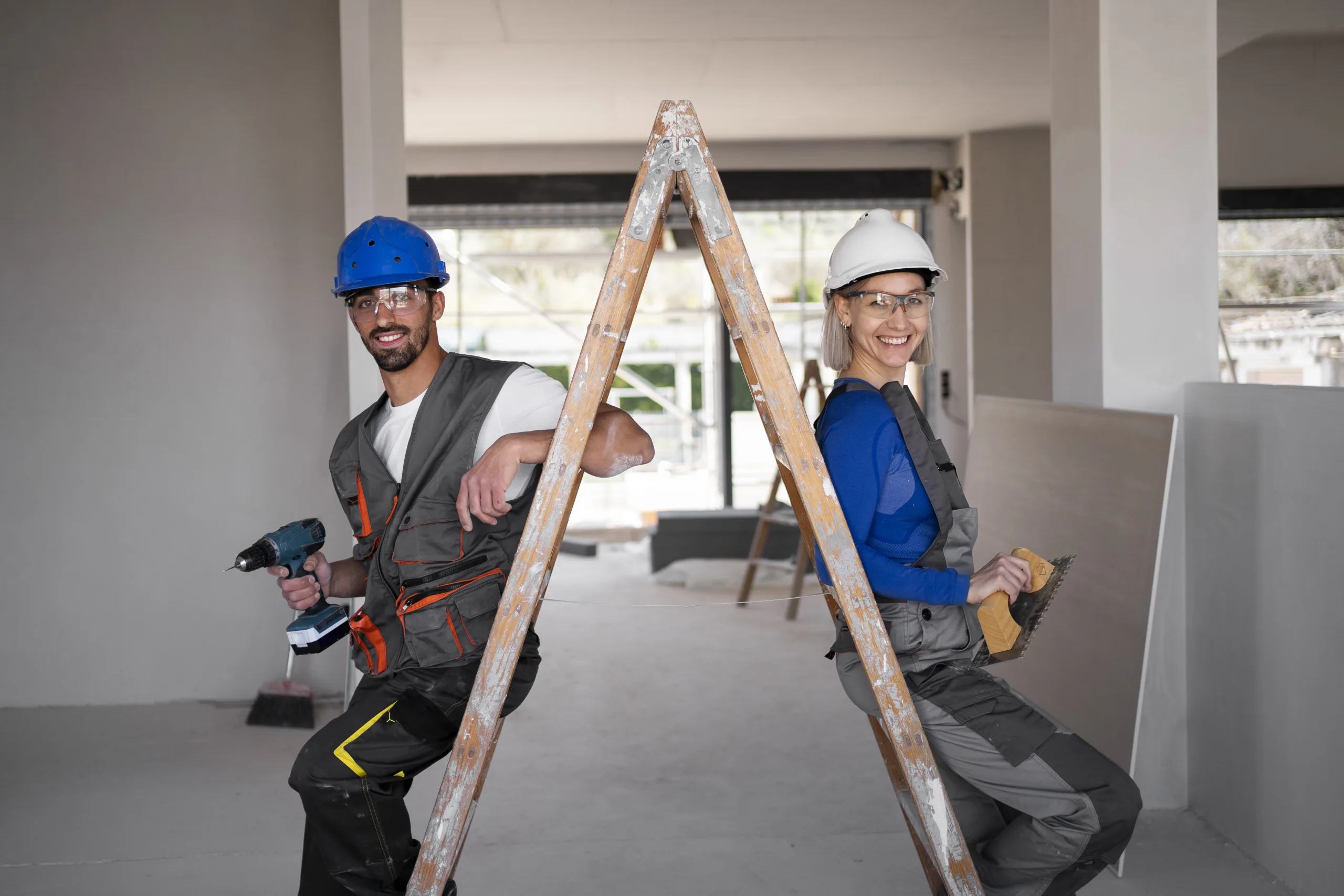
Apartment Renovation Contractors in Dubai: Questions to Ask Before Hiring
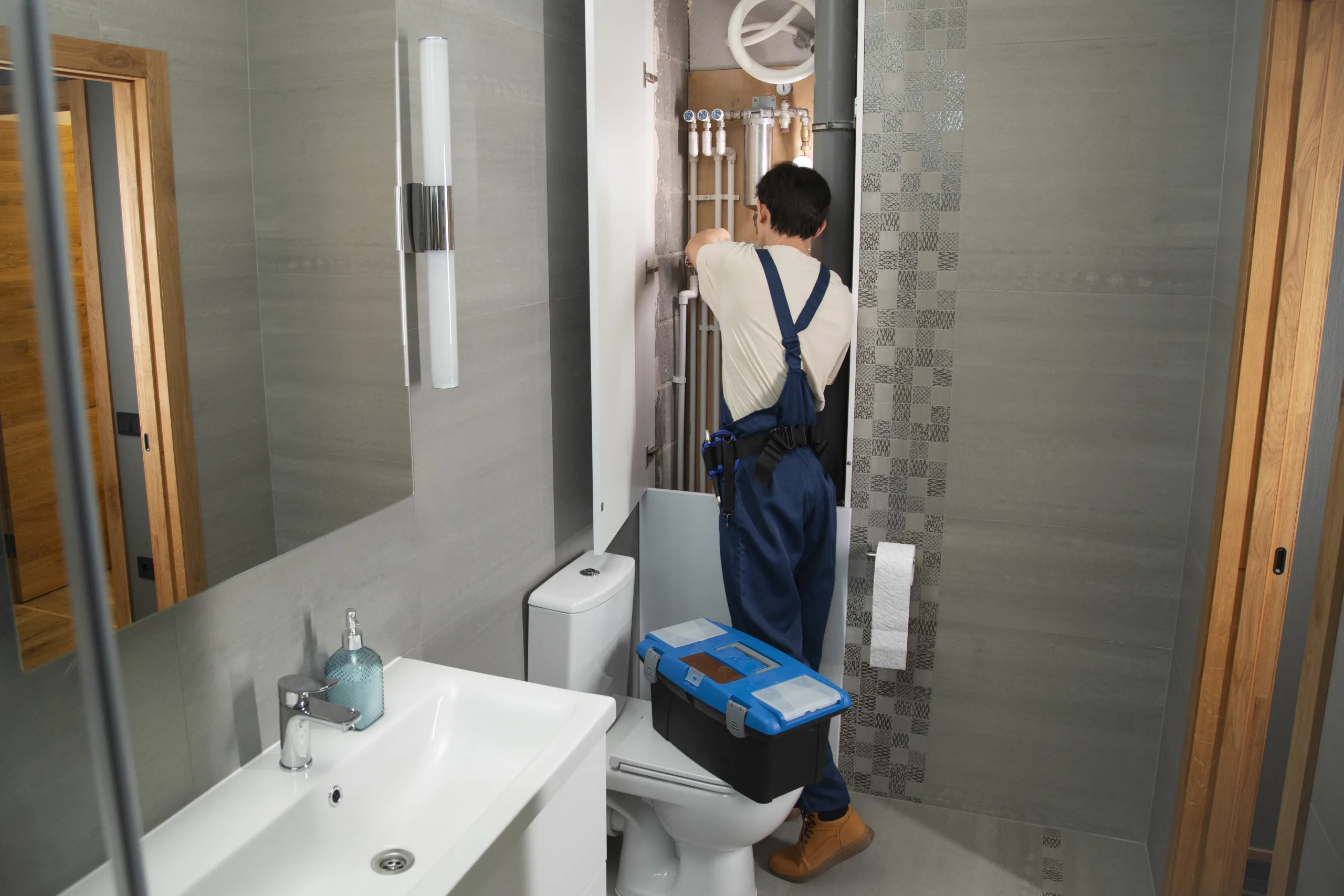
Bathroom Renovation Dubai: Cost vs. Quality
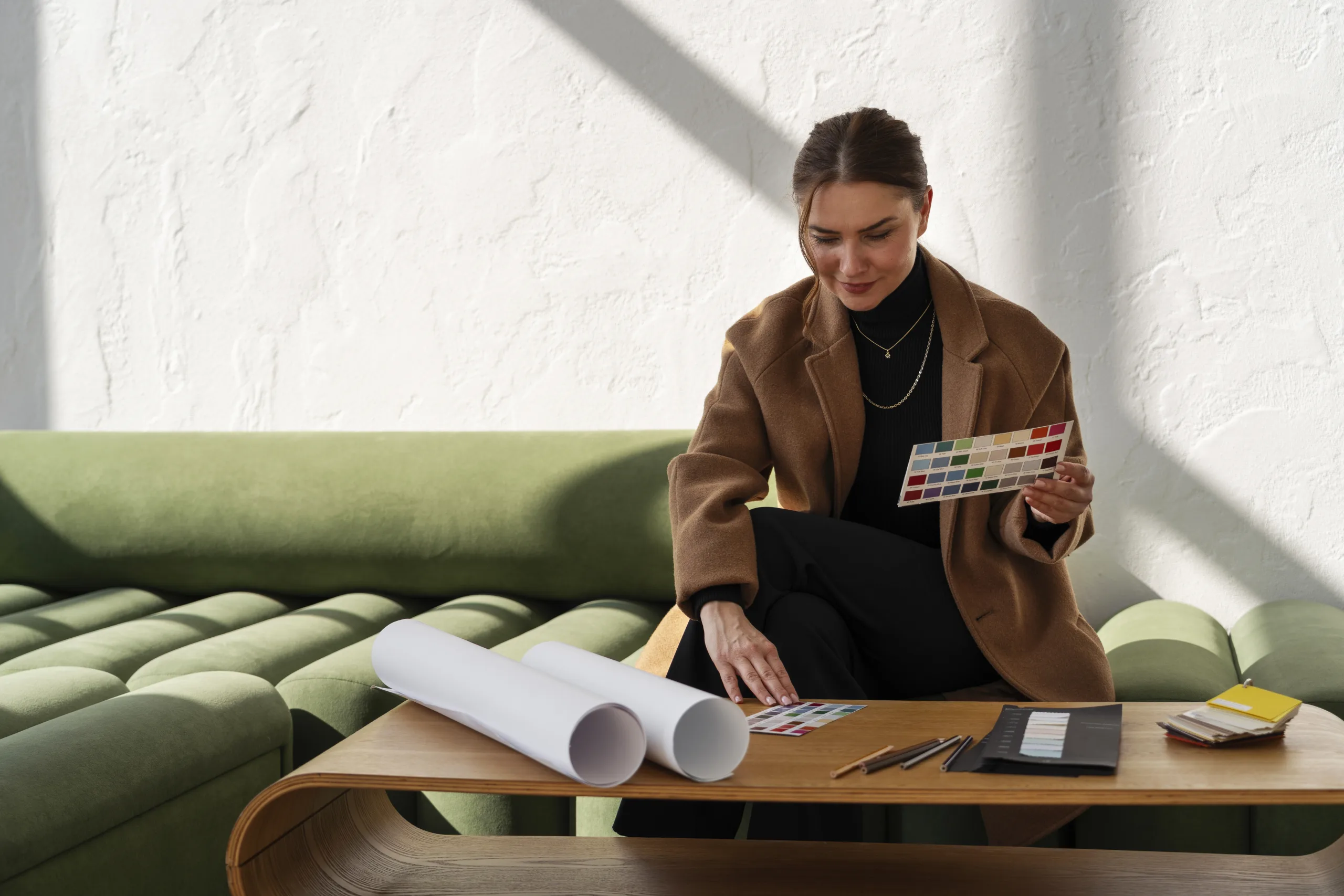
Interior Design Consultant vs. Interior Designer: Key Differences in Dubai
